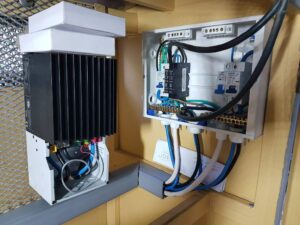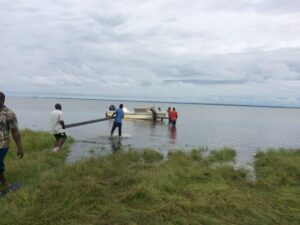Summary
- An advanced security monitoring network using infra-red technology can successfully combat wildlife-threatening poaching in Kafue National Park in Zambia, Africa
- The remote security surveillance stations in the network use PV/solar electricity for a reliable, consistent power source
- Project managers selected Morningstar components for on-site solar electricity production, based on their proven ability in long-term operation under extreme conditions
Situation
As the second largest wildlife refuge in the world, Zambia’s Kafue National Park stretches over 22,400 acres — an area comparable to the U.S. state of Massachusetts. Within its borders, a vast terrain of swamplands, grasslands and woodlands is home to more than 161 species of mammals. Unfortunately, as wildlife has thrived in this and other Zambian centers, poachers have also proliferated, part of a 100 billion dollar a year illegal business that has brought the population of the earth’s most fearsome predators to the brink of collapse.
The problem affects people as much as the endangered wildlife. More than one million tourists stream into Zambia’s national wildlife parks each year, lifting the local economy and funding conservation efforts that are critical to saving the lions, elephants, rhinos and other lesser-known endangered species that call Kafue, and other reserves, home.
To combat poaching, the World Wildlife Foundation formed a consortium of companies to develop a solution that would transmit real-time information to anti-poaching teams, and allow them to stop poachers before they act.
Project

Two of the four sites are isolated in areas populated by elephant, hippopotamus, baboons and monkeys. Also a threat are the numerous insects and spiders that infest any man made structure on the islands. The enclosures that house the equipment are designed with natural ventilation to ensure cooling with fine mesh gauze to keep spiders, bees, bats, wasps and other insects from making their nests within the equipment enclosures. Access to the furthest site entails a three hour boat ride and an escorted walk into the game area.
Solution

The best powering option involved using PV/solar-generated electricity on-site. For critical system components, TechLink chose Morningstar maximum power point tracking (MPPT) charge controllers to keep the system running at peak performance. Additionally, Morningstar Ethernet MeterBus Converters (EMCs) provide IP based network and internet connectivity so that the system can communicate its status back to the central control and monitoring station.
“Morningstar components were an obvious choice being readily available and dependable in remote bush applications at reasonable cost,” said Juan Swart, Operations Manager, at Techlink Ltd.
“Projects such as this empower Game Rangers with more effective surveillance during their anti-poaching tasks, resulting in wildlife preservation for future generations,” he added.
Morningstar Corporation features examples of our products used by our customers across a wide variety of environments and systems, to highlight their flexibility, performance and dependability. Installation best practices and preferences can vary across diverse regions and applications, and the examples shown here are for general interest and not intended as a guide. Always consult local codes and refer to product installation manuals for correct requirements.
